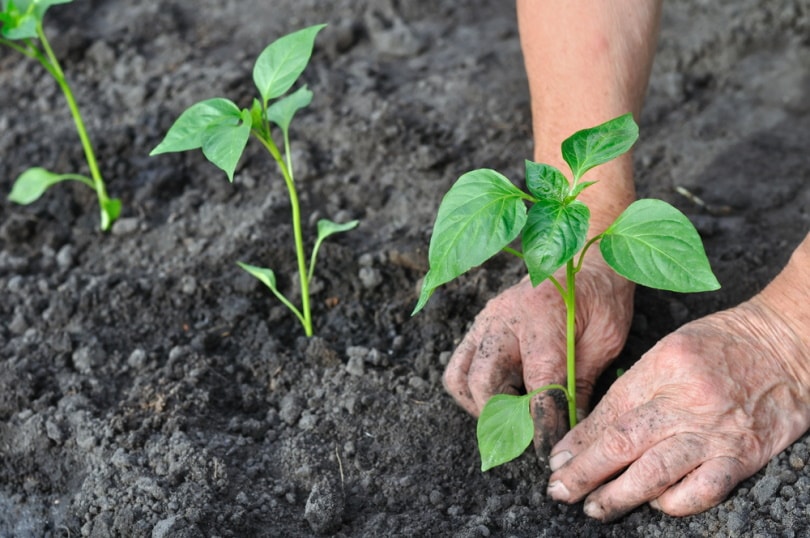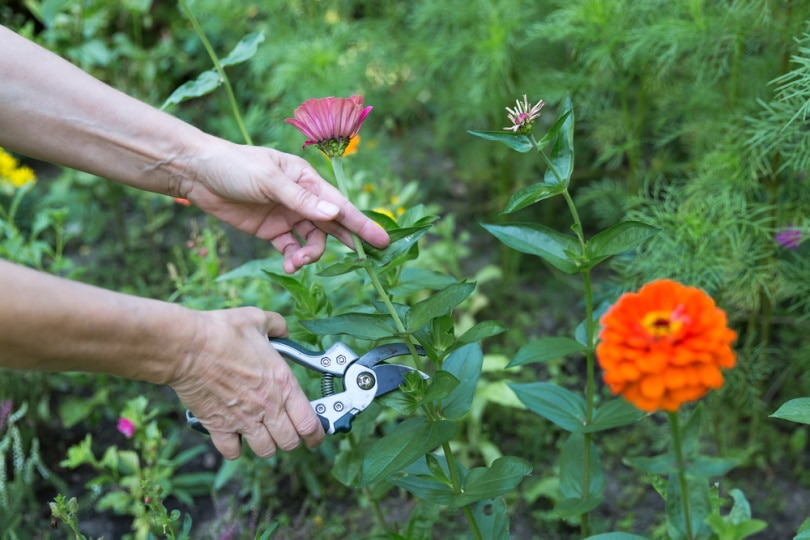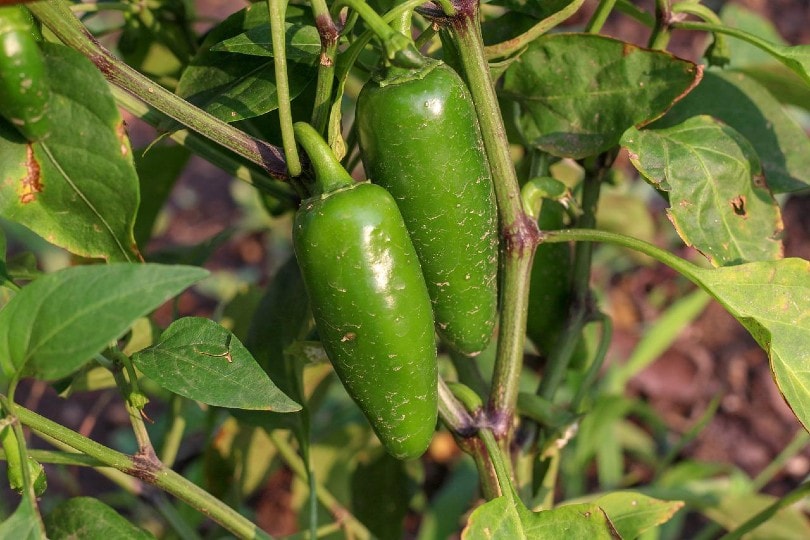How to Prune Pepper Plants: 8 Tips & Tricks
-
Pete Ortiz
- Last updated:

Peppers are easy plants to grow and maintain, especially if you live in areas with warmer climates. These plants require specific conditions to thrive, but if you give them what they need, with regular pruning, you will have a pepper plant that thrives throughout the season.
Every gardener knows how vital pruning is for young and mature plants. However, pruning may seem like a difficult task to handle if you’ve never done anything similar in the past. This article will further explain pruning and how to prune your pepper plant effortlessly.
 What Is Pruning?
What Is Pruning?
Pruning is a beneficial process of selectively removing damaged, overgrown or dead stems and branches. Your plants will continue growing stronger and healthier if you do this at the right time. Pruning can be done for many different reasons. Whether you want to lower the density of the branches or make your tree healthier by cutting down the damaged branches, your plant will benefit from this process. When pruning, use a sharp and clean tool to finish the job faster and more precisely.

Why Pruning Pepper Plants Is Important
Pruning is essential to growing most plants, as it can drastically help the stems grow much stronger. Especially when it comes to pepper plants—topping pepper plants will benefit the plant by increasing side shoots and branches, leading to more flowers and fruits. For most pepper plant varieties, pruning the main growing tip creates a much bushier plant and provides more fruits for harvest. These bushes are also less likely to snap on the top and less susceptible to burning.
Pruning pepper plants and other similar plants make them much less susceptible to pest infestations. Those stems and branches damaged or touching the ground are much more likely to attract destructive insects and diseases, spreading them to the healthy parts of the plant.
The only minor downside of pruning pepper plants is that topped pepper plants take longer to develop fruits, which can be inconvenient for people living in areas with short growing seasons.
The 8 Tips & Tricks on How to Prune Pepper Plants
1. Gather the Right Tools

Before you begin pruning, it is essential to choose the correct tool. Using a sharp pair of scissors or pruning shears would be best. Making a clean cut on the stem reduces the risk of infections and makes the healing process much quicker.
2. Pinch Young Plants
When pruning the plant while it is still young, it is best to use your fingers and pinch the unwanted stems or buds. You can begin pruning the pepper plant once the plant becomes about 1 foot high.
When pruning the young plant for the first time, ensure you dip your hand in a solution containing powdered milk and water, to eliminate the risk of spreading bacteria from one plant to the other. Cutting the stems at each node would be best to ensure healthier growth in other, more developed stems.
3. Prune Early Bloomers

Removing flowers that appear ahead of time can significantly affect later blooming. This will direct the plant’s energy towards having a stronger root, which will, in addition, bring later fruiting and sturdier stems.
4. Trim All Non-Essential Flowers
To give your pepper plant enough room to grow and spread freely, remove all those flowers appearing on the tops of the stems and every other branch. This way, you will control your plant’s growth, ensuring it doesn’t spend all its energy on pepper production at once.
5. Cut the Excess Branches at the End of the Season

Before the season ends, trim all the excess branches that don’t have any fruit. While removing the unnecessary branches, you can also cut back any peppers that won’t ripen before winter. Once you do this correctly, you will focus your plant’s energy on maturing all the final peppers.
The 8 Tips and Tricks on Pruning Pepper Plants
- Peppers enjoy warm climates and a lot of sun exposure.
- Planting pepper plants is best in spring or when the soil starts warming up.
- Use organic fertilizer to improve the growth of your pepper plant.
- Check for any new unnecessary development and prune the pepper plant regularly.
- Remove stems and leaves that grow facing inward.
- Cut all the flowers and fruits that are significantly smaller than the rest.
- Give your pepper plants constant and frequent watering.
- When you start noticing ripe peppers, harvest them as soon as possible, so more peppers continue growing in that place.
 Final Thoughts
Final Thoughts
Pruning—aside from some basic requirements this plant needs—is the best method of ensuring a healthy pepper plant and an excellent harvest throughout the entire season. This technique is straightforward to master. Once you learn its logic, you can continue pruning other plants using the same knowledge. Growing healthy and strong pepper plants can be pretty easy once you manage the craft of pruning.
- See also: 8 Tips on When and How To Prune Boxwood
Featured Image Credit: yuris, Shutterstock
Contents

 What Is Pruning?
What Is Pruning?
